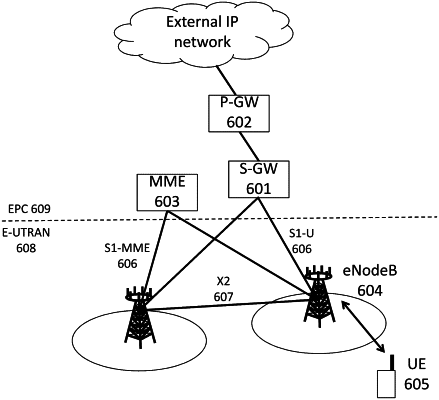| CPC H04B 7/0452 (2013.01) [H04B 7/024 (2013.01); H04B 7/0456 (2013.01); H04B 7/0626 (2013.01); H04B 17/12 (2015.01); H04L 25/0224 (2013.01)] | 30 Claims |

|
1. A wireless transceiver station comprising:
(a) a first set of N antennas of the wireless transceiver station in a radio access network (RAN) within a coverage area, where N is an integer greater than 8; and
(b) hard-wired logic connected to each antenna in the first set of N antennas, which when executed causes the wireless transceiver station to perform a method comprising steps of:
(1) sending a plurality of training signals from at least a first antenna of the first set of N antennas to at least a second antenna of the first set of N antennas;
(2) processing the plurality of training signals to estimate a plurality of radio frequency calibration coefficients;
(3) determining uplink (UL) channel state information (CSI) in response to receiving a plurality of UL transmissions by one or more of the first set of N antennas from one or more of a second set of M antennas of a plurality of user equipment devices (UEs);
(4) preconditioning a matrix of UL CSI using the plurality of radio frequency calibration coefficients to obtain a matrix of downlink (DL) CSI; and
(5) based on the matrix of DL CSI, precoding a plurality of radio signals transmitted concurrently by the first set of N antennas, to cause the plurality of radio signals to deliberately interfere to create concurrent, non-interfering channels at a respective location of each antenna in the second set of M antennas.
|